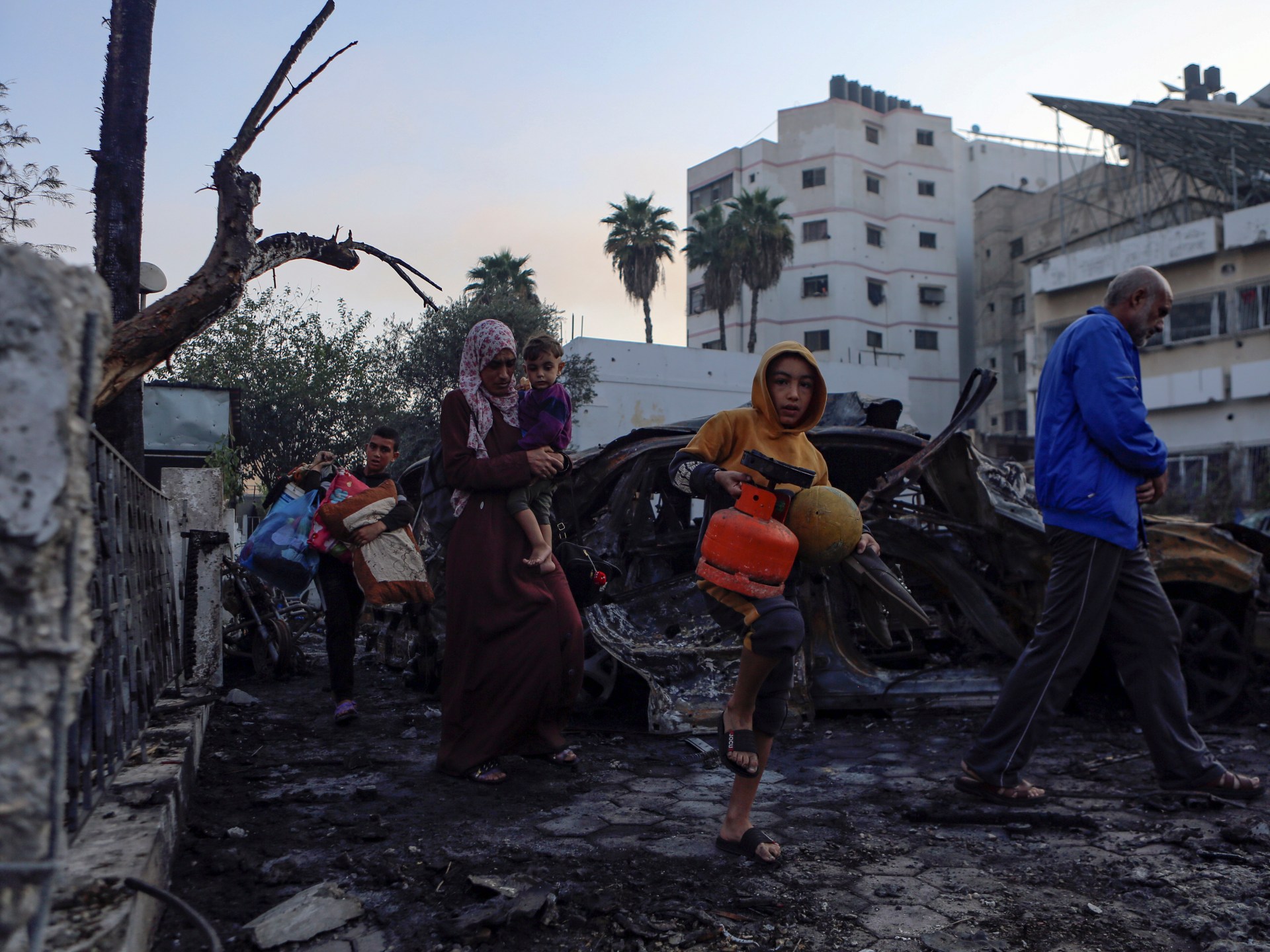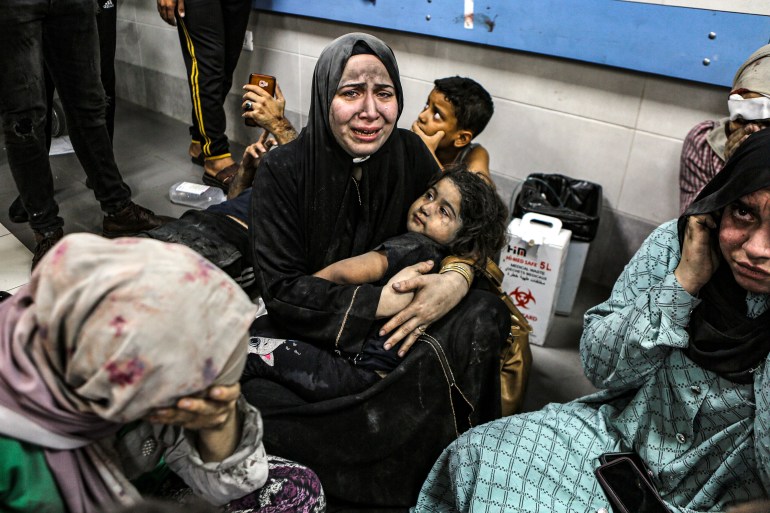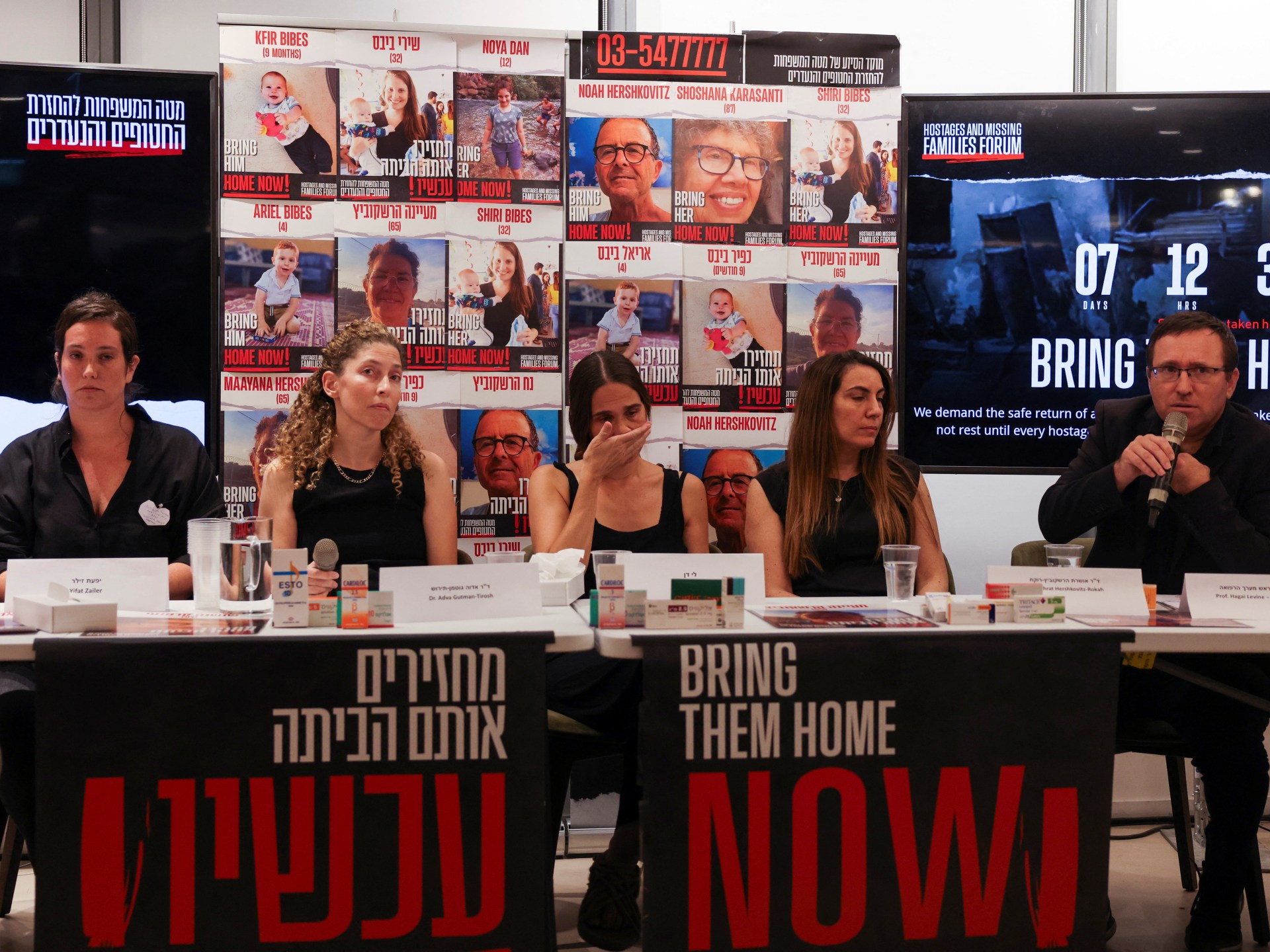
Ten days after the start of Israel’s brutal war on Gaza, a few seconds of footage showing a projectile exploding in the night sky became the focus of a heated debate.
Israel claimed that the clip captured from an Al Jazeera livestream at 6:59:50 p.m. on October 17 showed that a misfired Palestinian rocket was responsible for the deadly explosion at al-Ahli Arab Hospital that occurred five seconds later .
Investigations by AlJazeera and that New York Times showed that the projectile in question had nothing to do with the hospital tragedy. But by then, the theory that the explosion was caused by a Palestinian rocket had taken on a life of its own and was confirmed by open source intelligence (OSINT) researchers and commentators lured by groupthink and confirmation bias.
This is important. Before the conflict, OSINT journalism was already well established and brought new precision to the reporting of events in countries such as Cameroon, Syria, Ukraine and Yemen. Organizations such as Bellingcat and Forensic Architecture received praise for restoring the primacy of facts over opinions, thereby helping to uncover war crimes.
The trend has reached its peak in Gaza. International media excluded from the conflict zone have increasingly relied on open-source materials, including footage from Al Jazeera, the only global media organization that maintained a consistent presence in Gaza throughout the war.
There have been notable OSINT breakthroughs – including by Al Jazeera’s fact-checking unit Sanad refuted Israel’s claim of a Hamas tunnel under Al-Shifa Hospital and showed how Palestinians fleeing the northern Gaza Strip on Israel’s orders were killed on the very “safe routes” recommended to them by Israeli forces.
But as the episode at Al-Ahli Hospital shows, the war has also brought new challenges for the rapidly growing field. To understand how OSINT practitioners have stumbled in this war, Al Jazeera spoke to Idrees Ahmad, associate editor at New Lines Magazine and journalism director at the University of Essex.
Al Jazeera: You’ve written about how open source research has reinvigorated war reporting. In Gaza, it appears to have taken on a particularly important place, with open source experts gaining significant mainstream attention online. Her thoughts?
Idrees Ahmed: The OSINT landscape has changed significantly over the years. In the case of Syria, the OSINT community did very rigorous work to initiate war crimes investigations. But something opposite is happening in Gaza. We have seen anonymous accounts posting speculative information, giving it the form and aesthetic of OSINT but without the rigor. This information spreads quickly and becomes a form of groupthink that no one can fight against.
Al Jazeera: Let’s find out what happened to al-Ahli. Why is it notable?
Ahmad: Al-Ahli was significant. Importantly, it occurred in the context of many similar attacks on hospitals. The reasoning was that the hospitals were being used either for attacks or as Hamas headquarters. Interestingly, the media initially assumed that Israel did it.
Al Jazeera: Yes. Can you describe how the tide turned?
Ahmad: It started with a few anonymous OSINT accounts that gave the appearance of precision and rigor associated with OSINT. So someone analyzed the Al Jazeera livestream of the projectile exploding in the air and suggested that the coordinates of that missile were exactly over the hospital, clearly supporting the theory that a Palestinian missile had exploded in the air and then the explosion on the ground had caused. Another captured separate footage and came to the same conclusion.
Al Jazeera: Wasn’t much emphasis also placed on the OSINT images of the hospital parking lot, with the crater that appeared too small for an airstrike?
Ahmad: Yes, after the first anonymous reports laid out their theory, suddenly everyone started buying into it speculate that Israel’s version of events was correct. It sparked a type of groupthink where everyone engaged in speculation and deductive logic to support this theory without any physical evidence.
Al Jazeera: Can you be more specific? How did groupthink develop?
Ahmad: Yes, obviously none of us experienced the strike directly. However, we know that the OSINT people’s perceived rigor became the basis of a theory based on errors.
When so-called experts are quoted, their reputation is tied, among other things, to a theory that is then confirmed by other experts. So it got to the point where a respected figure in the OSINT community shared this Wall Street Journal video which claimed the rocket had multiple angles and said very conclusively that it caused the explosion. And as the NYT investigation showed, that certainly wasn’t the case.

Al Jazeera: Yes, that was important, right? The NYT said the “rocket” was not Palestinian at all. It involved an object that was fired near an Iron Dome center in Israel and exploded a few miles from al-Ahli. Surely a reason to go back to the drawing board?
Ahmad: The thing is: After The New York Times came out and debunked the Israeli claim that the projectile in the Al Jazeera video caused the explosion, people started looking for new rationalizations to stick to their conclusion. This is the essence of the conspiracy theory.
Al Jazeera: So what is the result of all this?
Ahmad: It raises serious questions about these very confident judgments. There was no rush to admit that they were so completely wrong. Or maybe suspend judgment until there’s an investigation or something like that. AP, for example, had published its own open-source research, essentially revisiting existing theories, using the same group of eager experts. After the story collapsed, she simply turned to a new group of experts—smaller and unknown—who were willing to support the “failed rocket” thesis.
The thing is that it has managed to create a fog of disinformation. It is obvious that Israel was attacking hospitals at this time. But instead we now have this big question mark over this one event. So if there is any doubt about this incident, that somehow makes every other incident questionable.

Al Jazeera: So Al-Ahli became a kind of barometer for which side to believe? Do you think the pendulum has simply swung the other way?
Ahmad: Yes, and even the NYT went further than necessary. I mean, their investigation was solid. But even they felt obliged to pay lip service to the failed rocket theory. They didn’t have to engage in speculation. Perhaps because they refuted it, they felt they had to make a concession to this theory. Therefore, they still said that a Palestinian rocket could have been responsible, alluding to footage of Palestinian rocket fire fired in the area. They pointed out that the aftermath did not look like an Israeli airstrike and that Hamas had provided no evidence.
Al Jazeera: So we have this one element of clarity that the projectile in the video had nothing to do with the explosion, and then we have all this noise? But what about the Gaza Health Ministry’s figures of 500 deaths, which were later revised? Do you think this fueled attempts to discredit the Palestinians’ claims?
Ahmad: Yes, there was a revision, but it was still a pretty significant number. The interesting thing was that this [Israeli] narrative [about Palestinian claims on deaths] was even then contradicted by a senior US officialwho said estimates of the total number of deaths may actually be higher than figures provided by the Gaza Health Ministry.
Al Jazeera: So will we ever find out the truth about al-Ahli?
Ahmad: Creating fog has always been the main Israeli strategy. I mean, there are people who still insist that Israel never killed Muhammad al-Durrah. Twenty years later, they still say that the video of the child being protected by his father was fake or that he was killed by Palestinian gunfire. Over time, physically [evidence] Often it is lost and memories deteriorate so no one can confirm or deny what happened. And you know, the same thing happened here. Even if someone is assigned to investigate in the future, where will they find reliable evidence?

Al Jazeera: What is the most important takeaway from all of this?
Ahmad: I understand why Israel would obfuscate; or why the anonymous reports of dubious origin could spread misinformation. I worry that groupthink is infecting the OSINT community, where, rather than challenging false beliefs, some have found creative ways to maintain prevailing orthodoxies. There is a particular need in the OSINT community to protect against infiltration by state actors.
The goal of propaganda is to get people to act in accordance with the propagandist’s wishes. Sometimes the goal is simply to obfuscate to ease your audience’s cognitive dissonance. Israel didn’t have to prove anything because, like any other side in a conflict, it has an eager audience inclined to believe anything you give it. So they’re just giving the audience something to counter claims of mass atrocities.
It is not a tactic exclusive to Israelis. A few years ago, Seymour Hersh wrote an article in the World in which he contradicted allegations that the Syrian government had attacked Khan Sheikhoun with sarin. Just as the Israelis used a fake audio recording that supposedly confirmed Palestinian responsibility for the attack, Hersh’s story about Syria also included a transcript of an alleged conversation between rebels planning the attack. Both were exposed and became fodder for satire. But the thing is: supporters of both Israel and the Syrian regime ate it up.
Al Jazeera: So we believe what we want to believe?
Ahmad: When you are ideologically predisposed to believe something, your threshold for skepticism becomes very low. You just accept.






Recent Comments